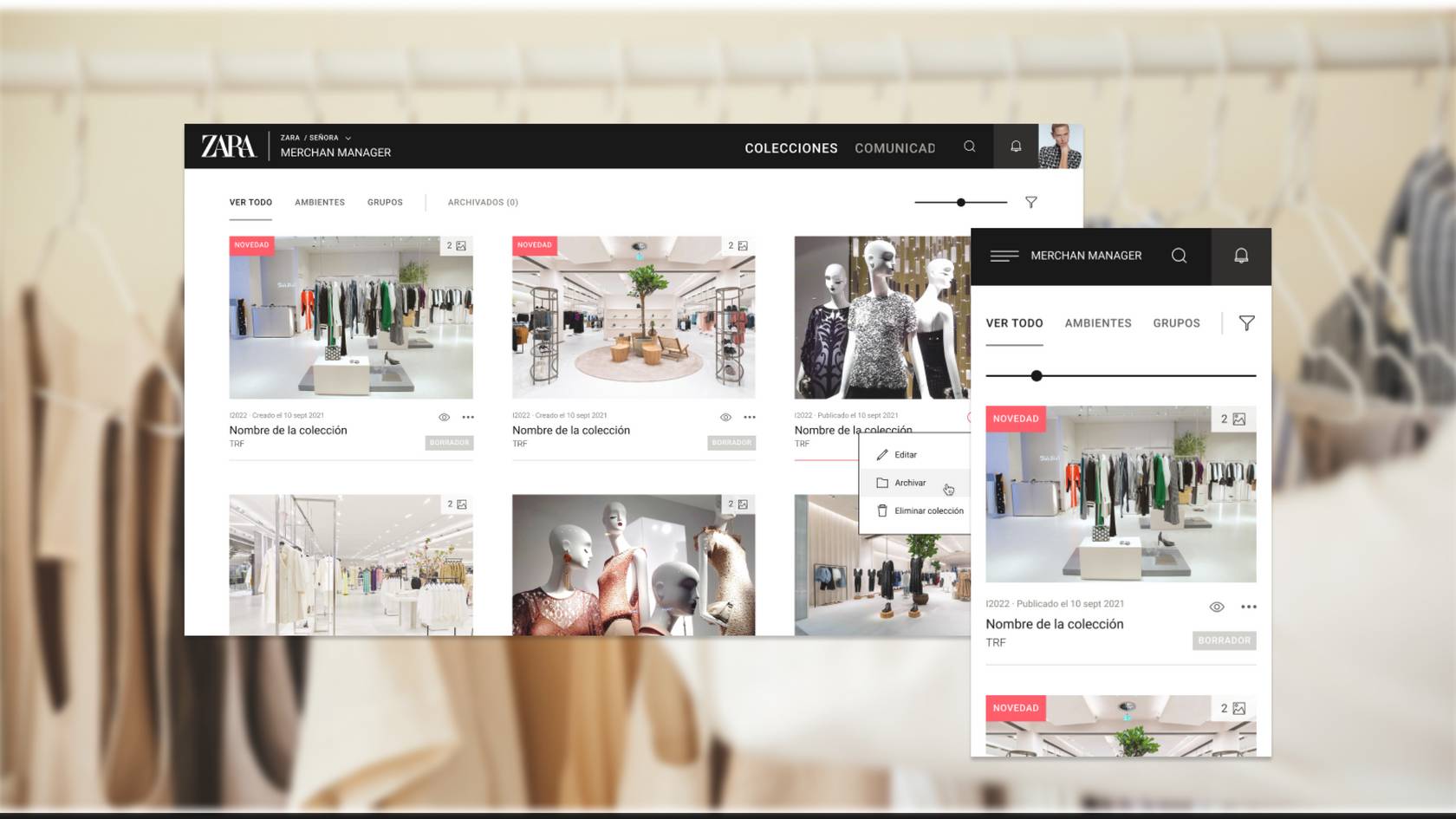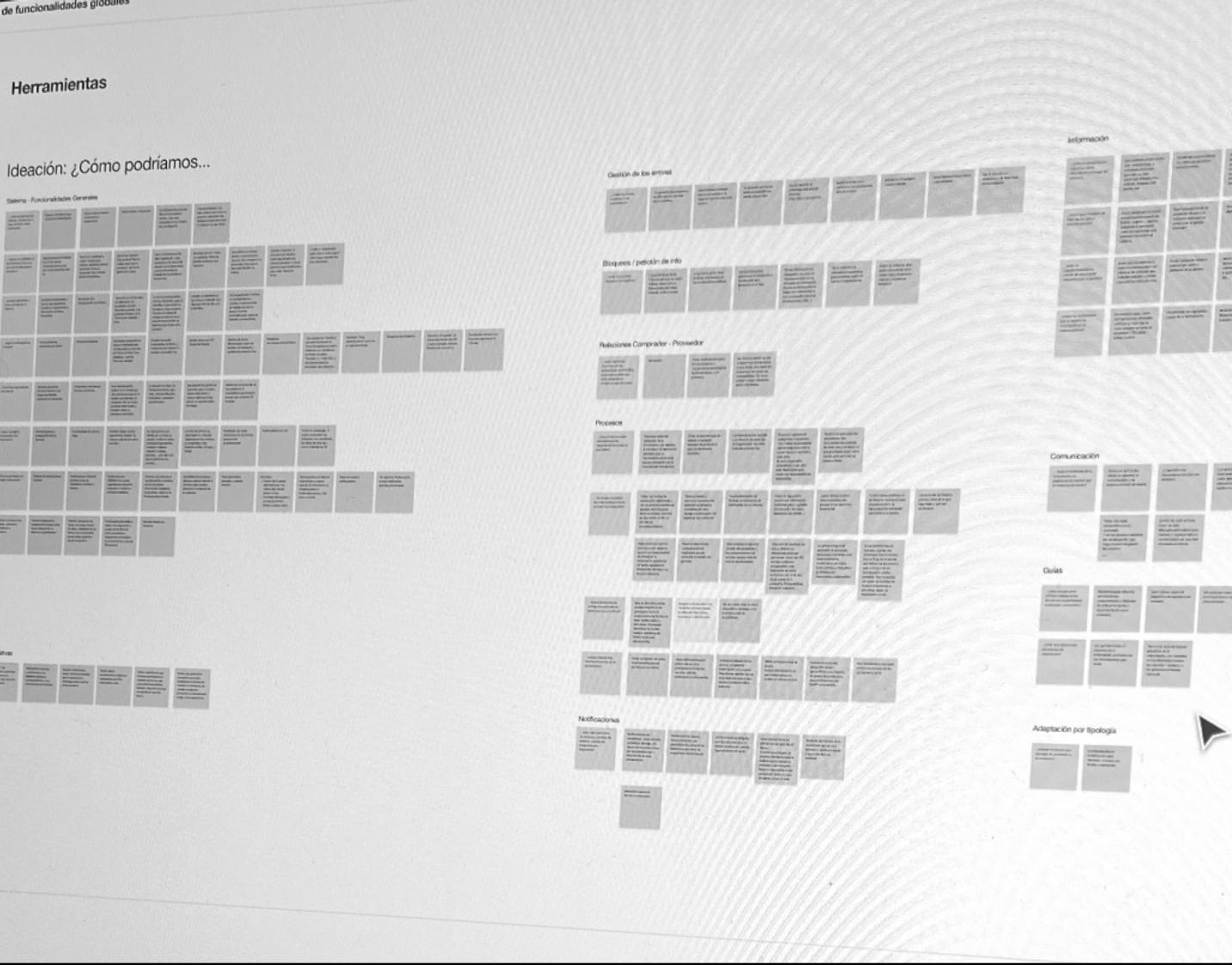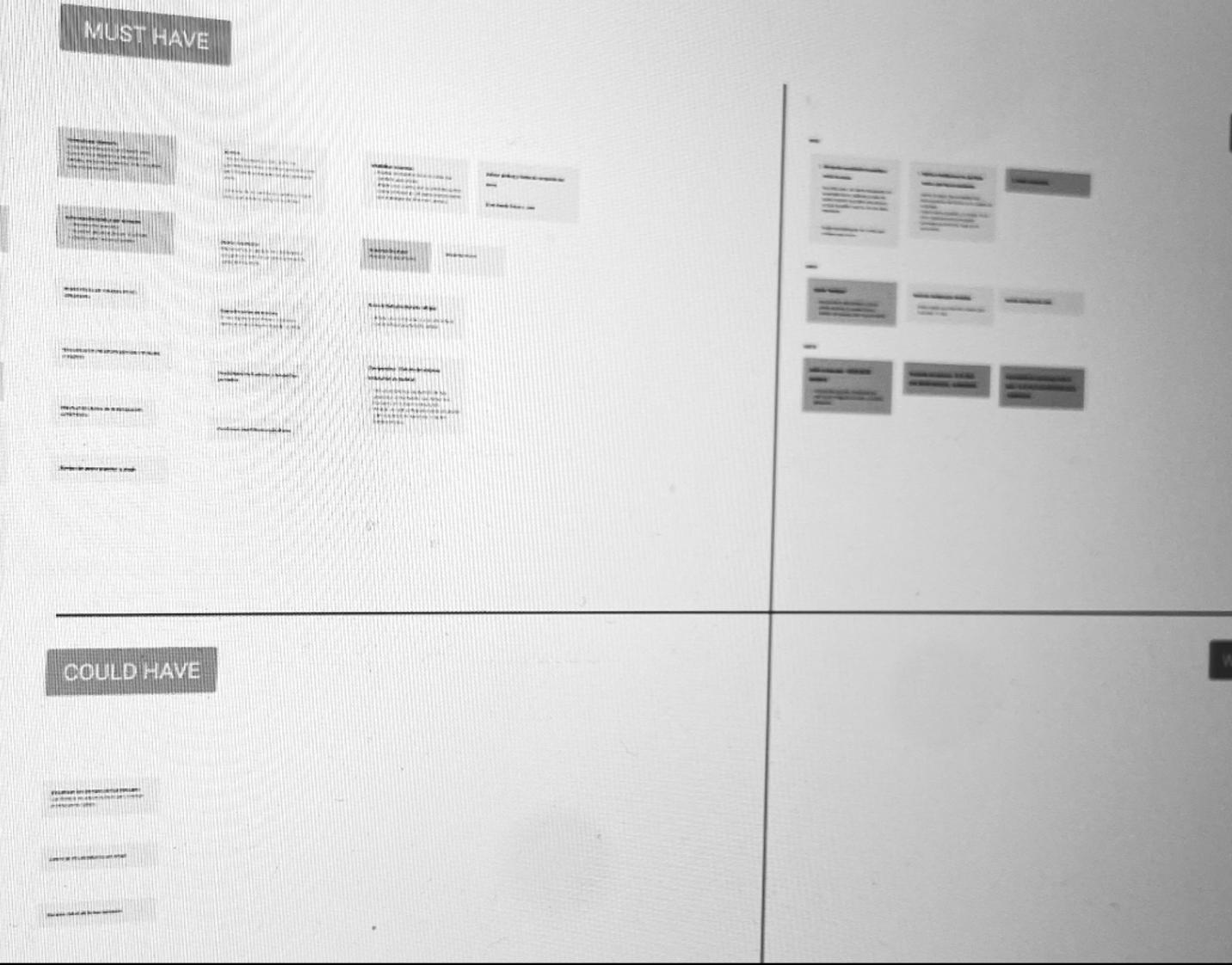

Transforming the supply chain experience
Client
- Inditex
Industry
- Retail
Skills
- Information architecture
- Interaction design
- Research
- Visual design
Team
- 3x Product designer
Date
- 2021-2023
The crux of the transformation
Inditex is in a stage of transformation of its digital tools and services, both for internal users and suppliers.
The rapid advance of web technologies and browser capabilities allows a technological change towards web infrastructures and micro-services.
At this point, Secuoyas accompanies them to implement this transformation in the Supply Chain vertical.
Given Inditex's need to transform its digital tools and services, the opportunity was taken to redesign the different tools that form part of this vertical, including some of great importance such as Artemis (Item Master), Apollo (Master of Raw Materials) and the Master of labels and alarms.
We also collaborated on other tools such as the CD2 calendar, a functionality that allows us to manage the loading and removal of items from the warehouses during the sales period.
Artemis, a product focused on improving item registration
One of the products that Inditex has opted for when it comes to improving the supply chain is the one known as Artemisa, formerly the Master of Articles.
Artemisa is the tool in which the supplier can register the information of the articles (materials, compositions, parts of the garment, customs information...), in order to identify risks, make a history and register the costs of the articles.
The value proposition is the unification in a single application of the breakdown of materials and costs, the item breakdown and the introduction of item compositions.
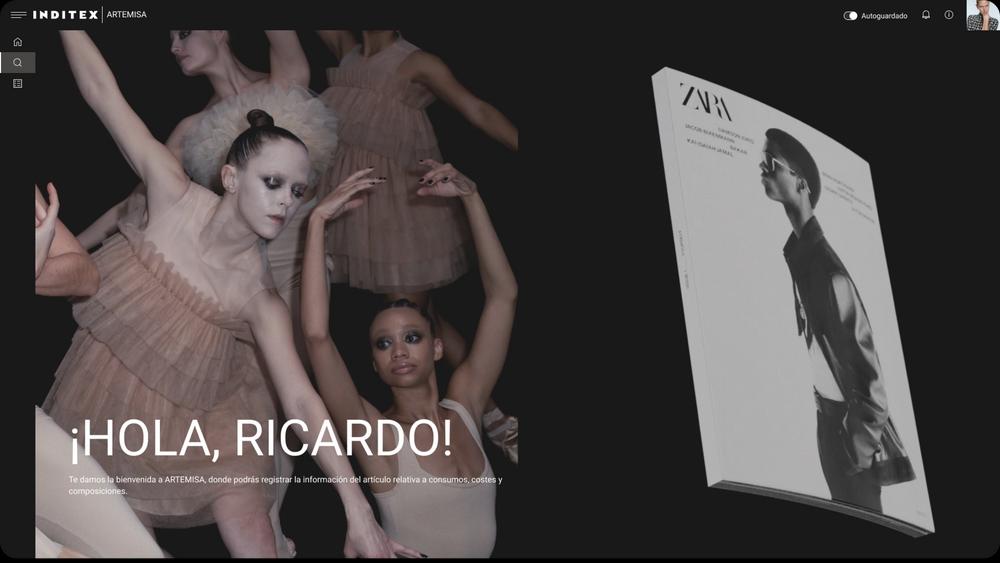
Understanding the business
During the project, a great deal of time was invested in research. We needed to understand the business and all the internal processesthat take place from the moment you want to start manufacturing an item until the item arrives in the shop, to know which profiles were involved and how the information is recorded.
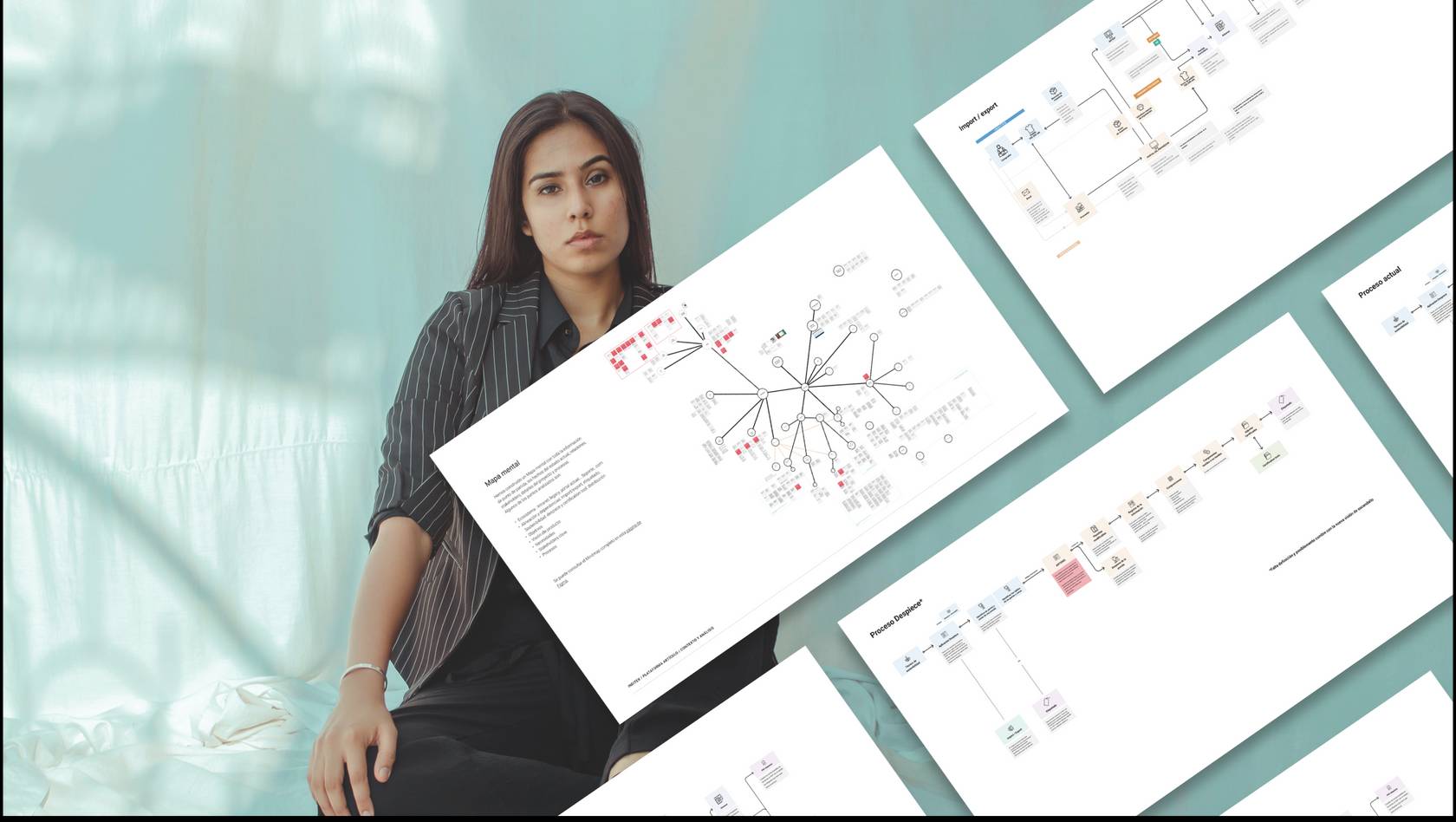


Another fundamental part of the research process was the interviews with the different parties involved.
Interviews were held with stakeholders from different departments such as the support team, in order to find out first-hand what the biggest incidents and difficulties users had. We talked with Zara's customer service to find out what data users demand when garments are on sale, with Sustainability to find out what information demands this department had and with those responsible for import and export to find out what problems occur with merchandise and what type of customs information they have to request, etc.
Understanding buyer-supplier relationships
It was also necessary to understand the relationship between the profile known as the buyer, who is responsible for selecting and purchasing the garments that will be sold in the future in the different Inditex chains, and the supplier, as well as the process that both carried out to register articles. To do so, we studied their needs, their current flows and tools they used. To fully understand the relationship between buyers and suppliers we conducted in-depth interviews with both profiles.
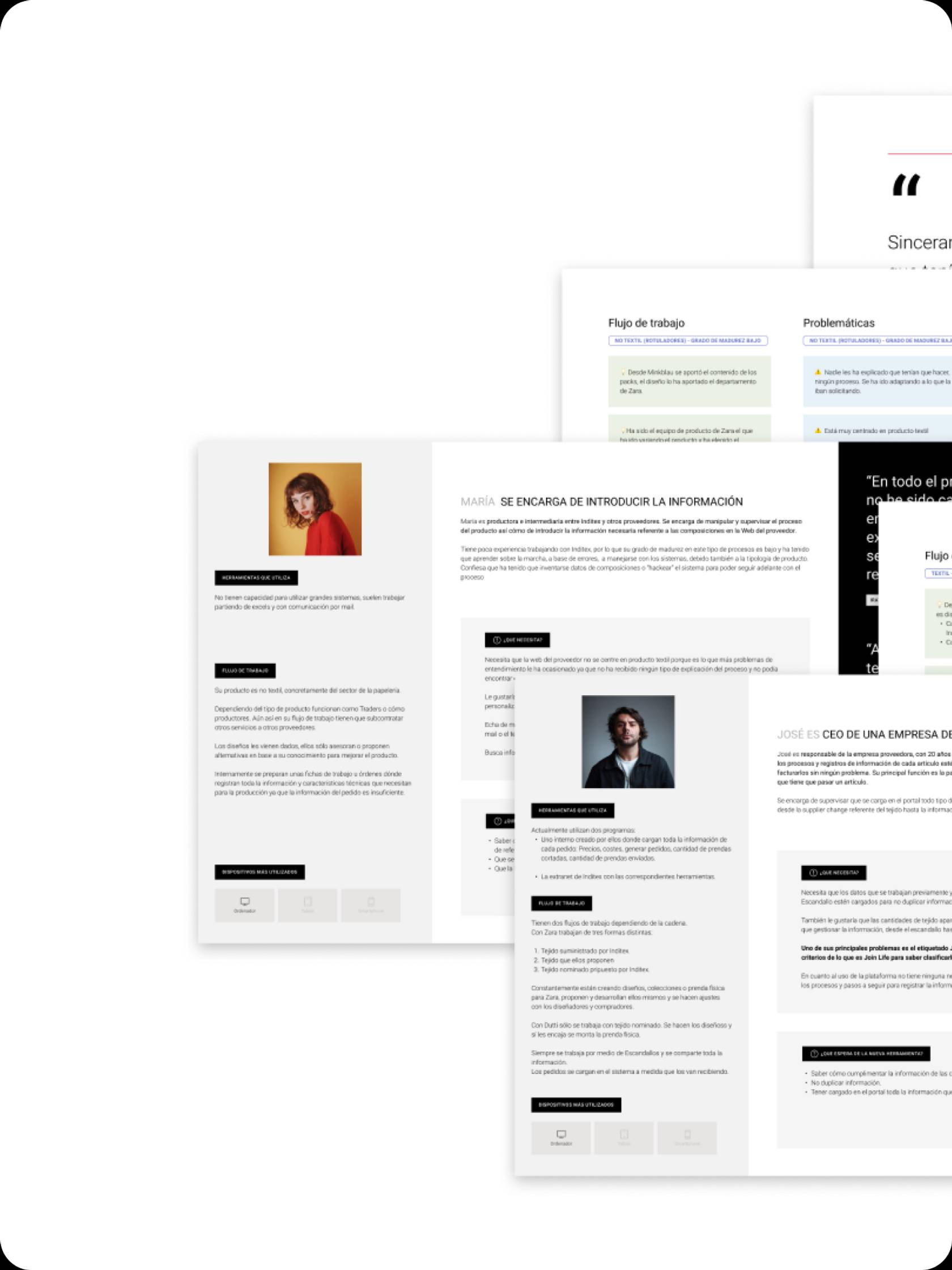

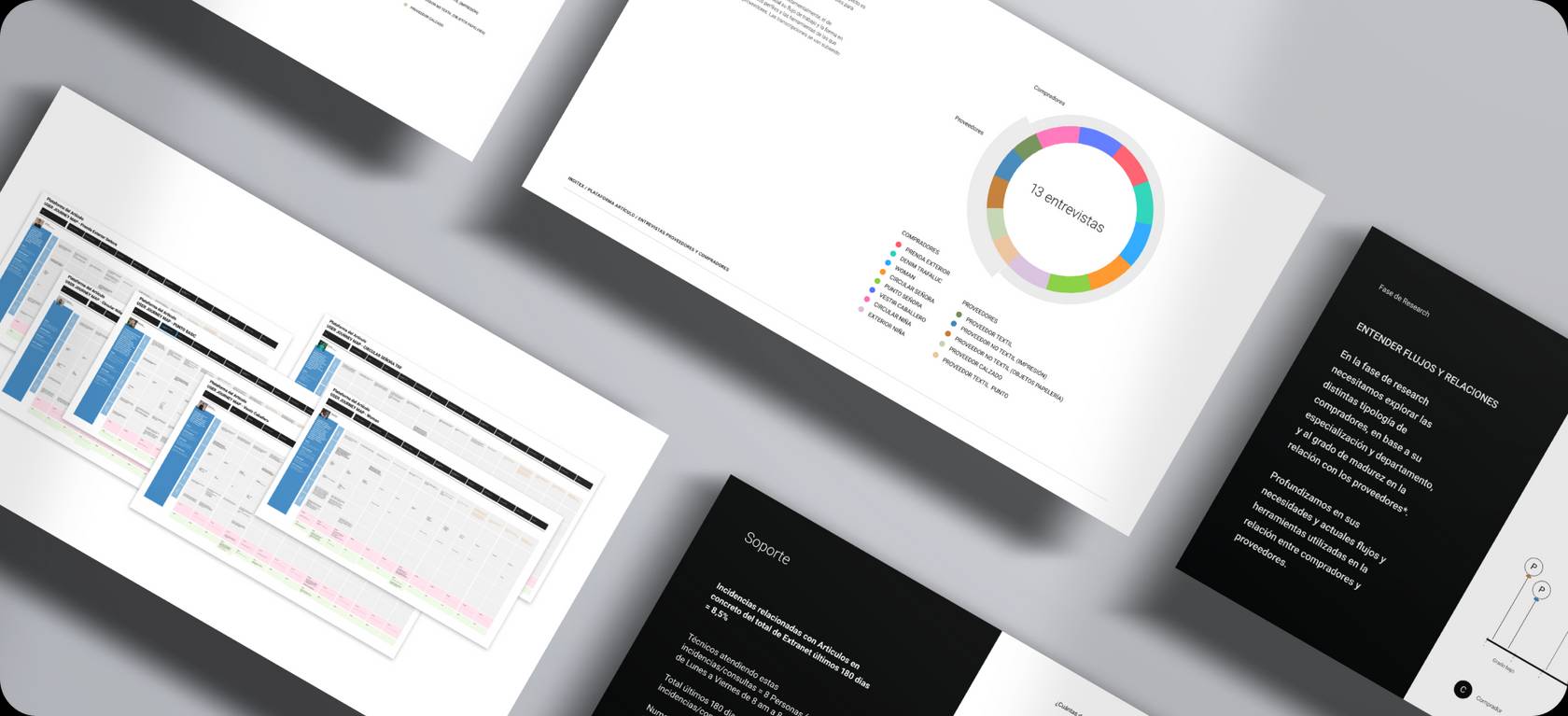

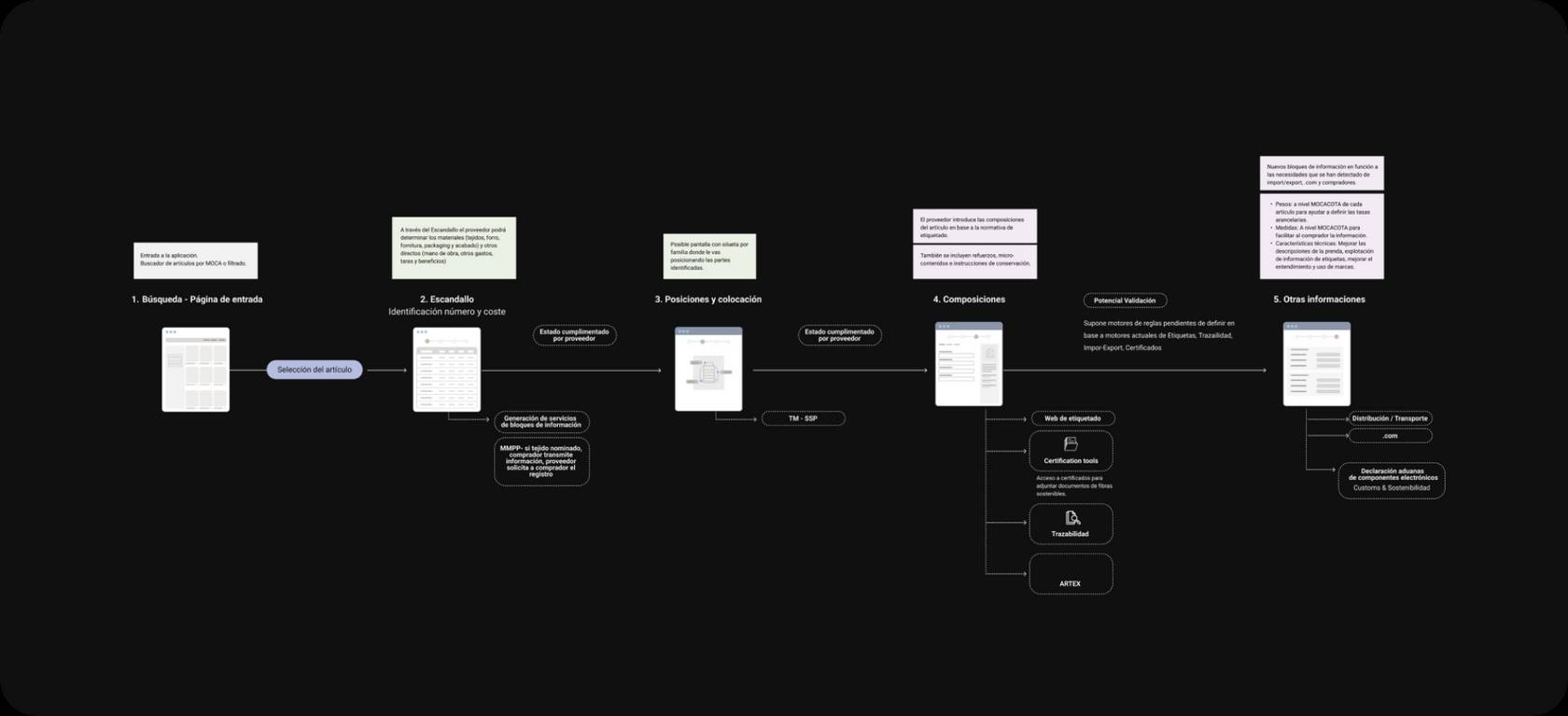

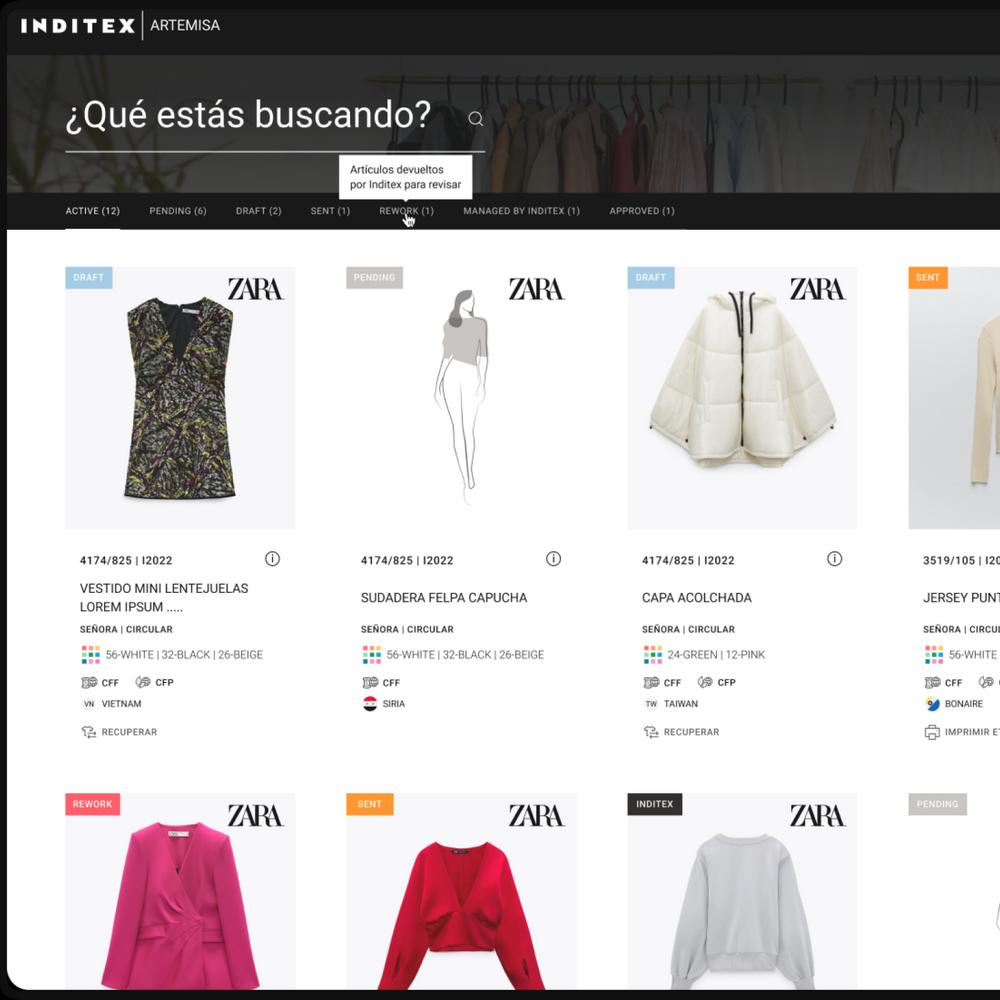
Different solutions in one single tool
The product had to cover different phases, the registration of materials and costs of each part of the product, its compositions and positioning, the introduction of customs information and characteristics of the article in order to identify risks and make a historical record.
To do this, we thought of a tool that would cover the product information in four simple steps, simplifying the process adding a summary so that the user would not get lost in the flow. To enter information on an article, the user accesses the search engine where he can see the reference of the article and the state of registration in which it is.
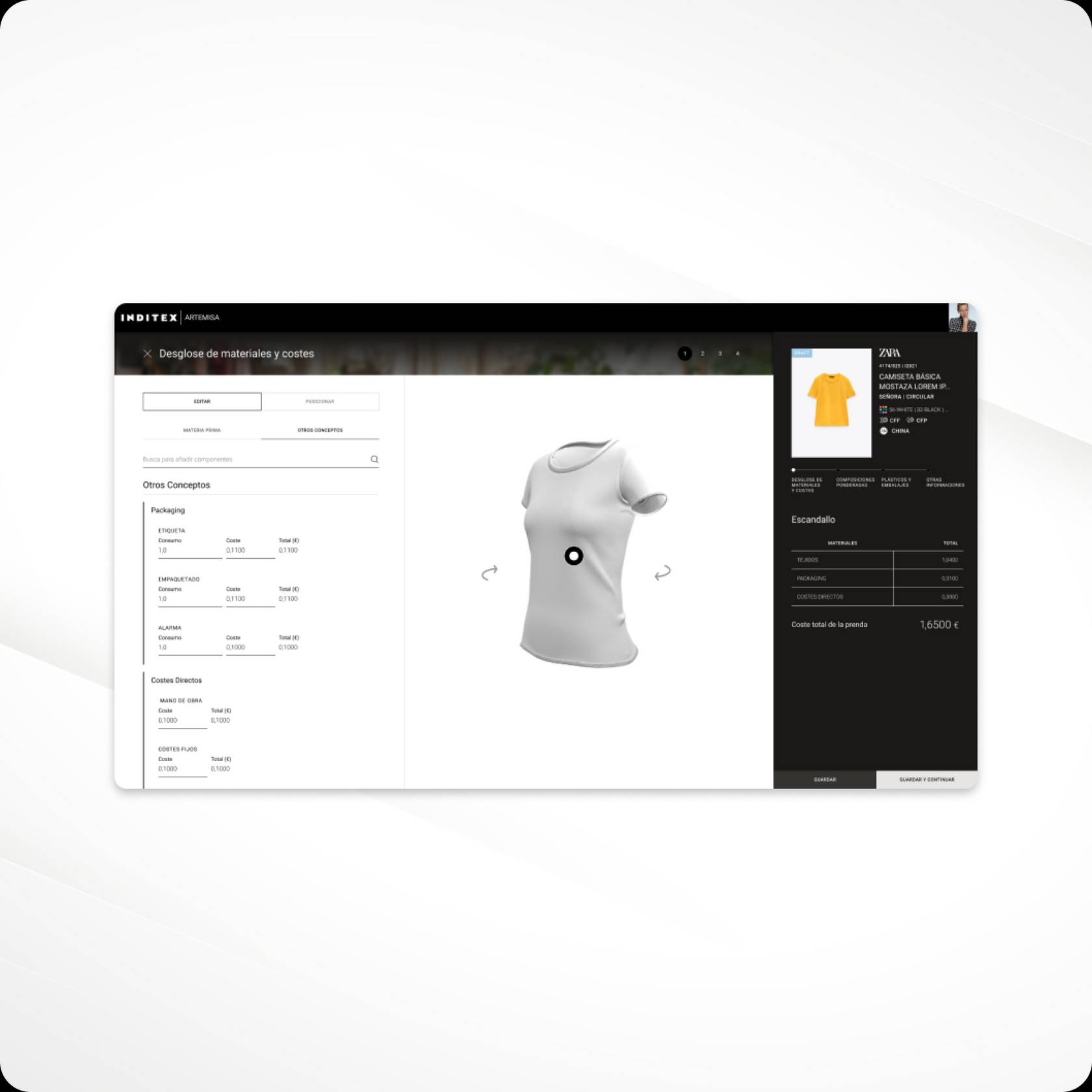

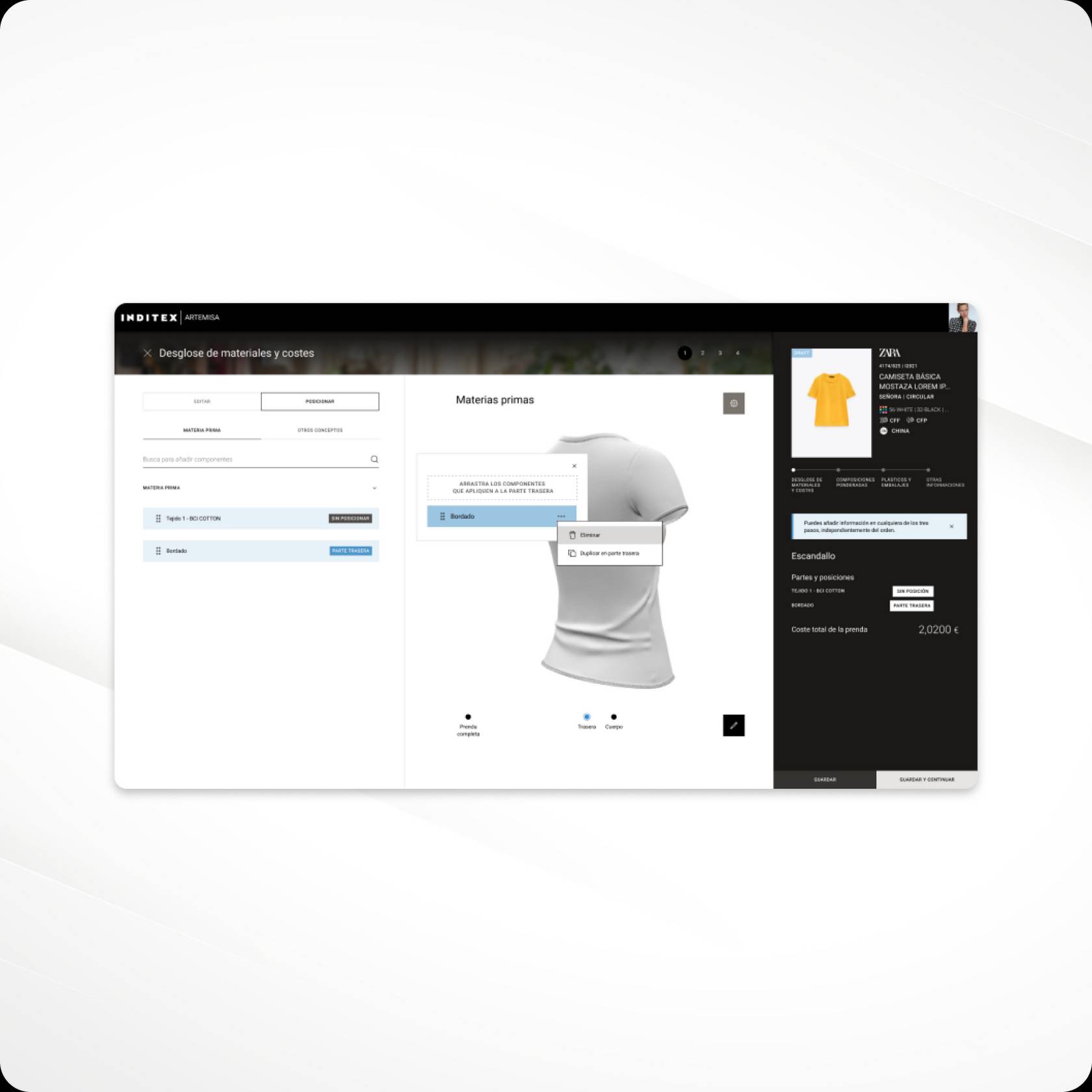

Other tools involved in the process
Raw Material Master, Label Master, CD2 Calendar and Merchan are some of the other relevant tools that came into play and on which we are working on implementing new functionalities aimed to improve the user experience.
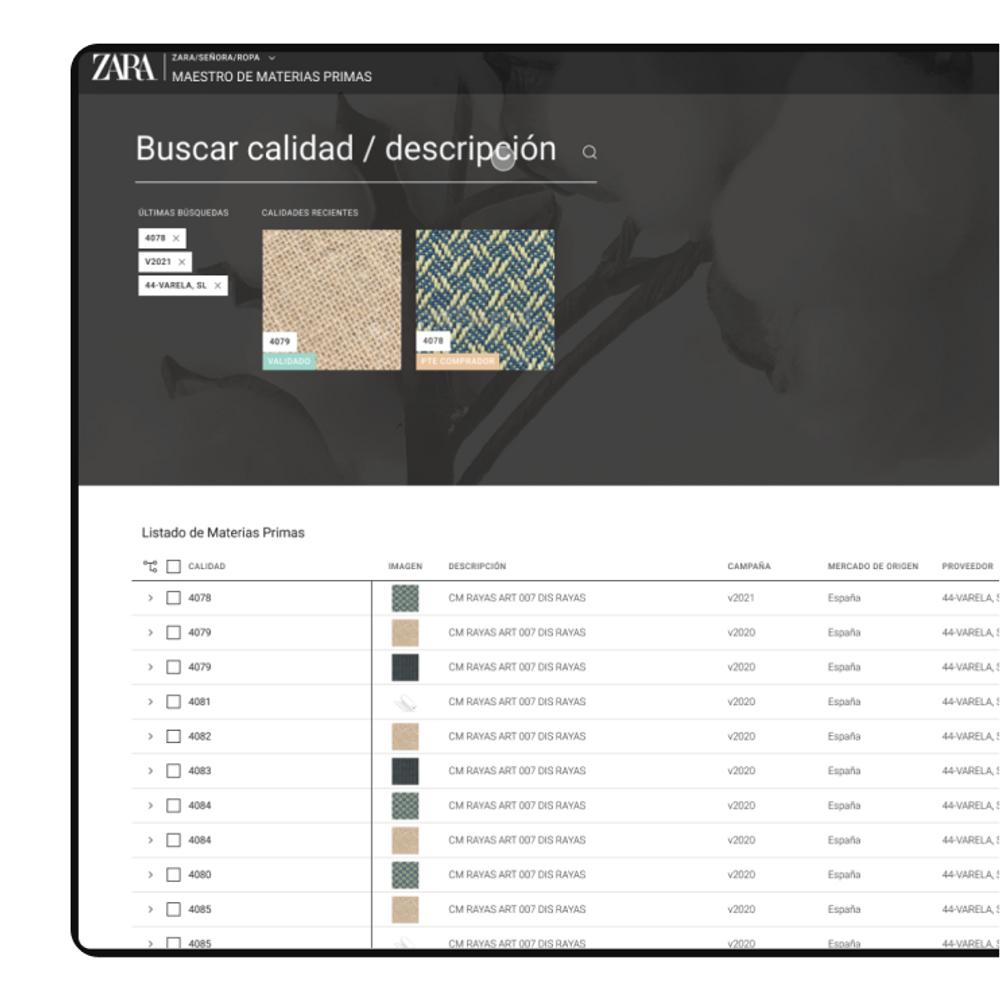
Raw Materials Master


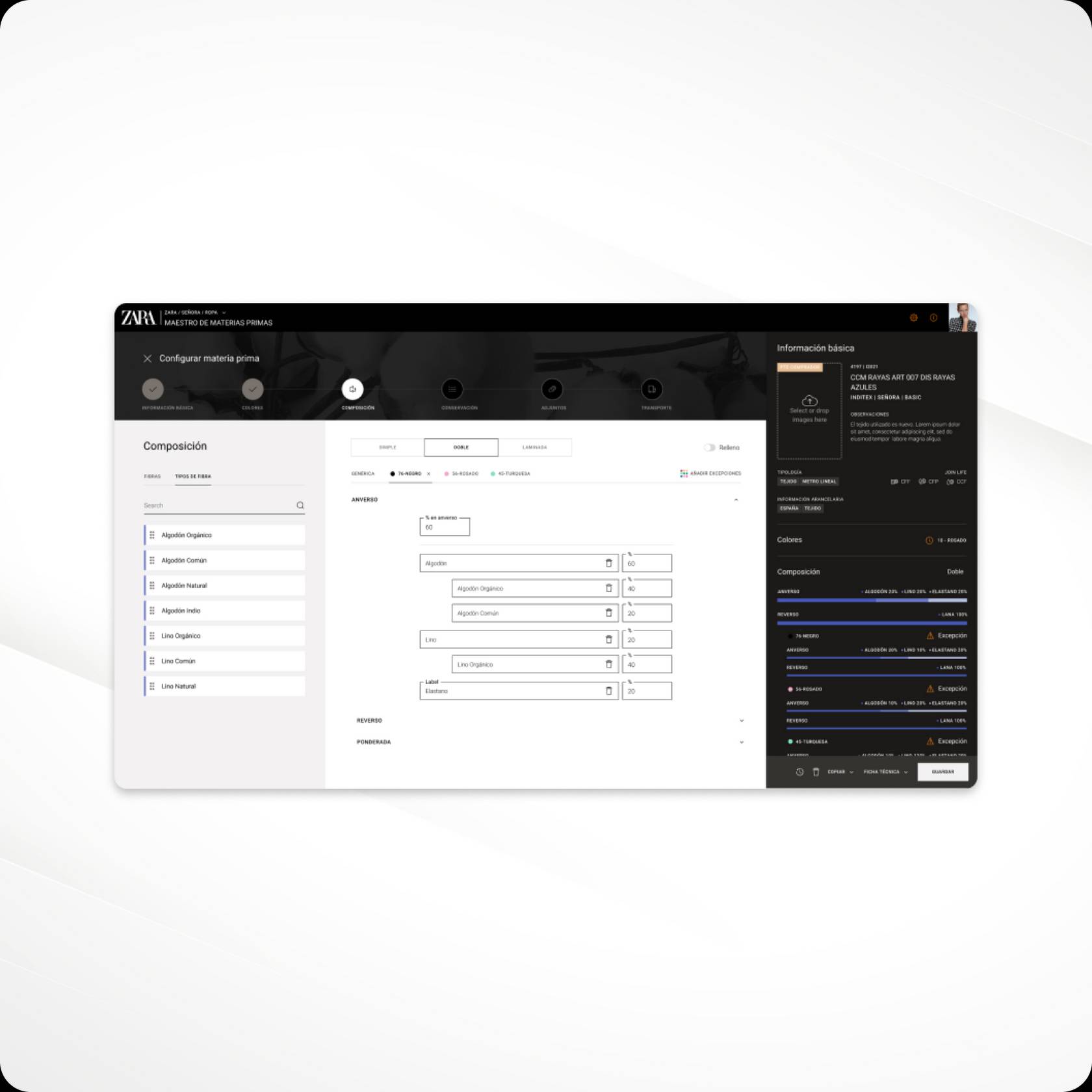

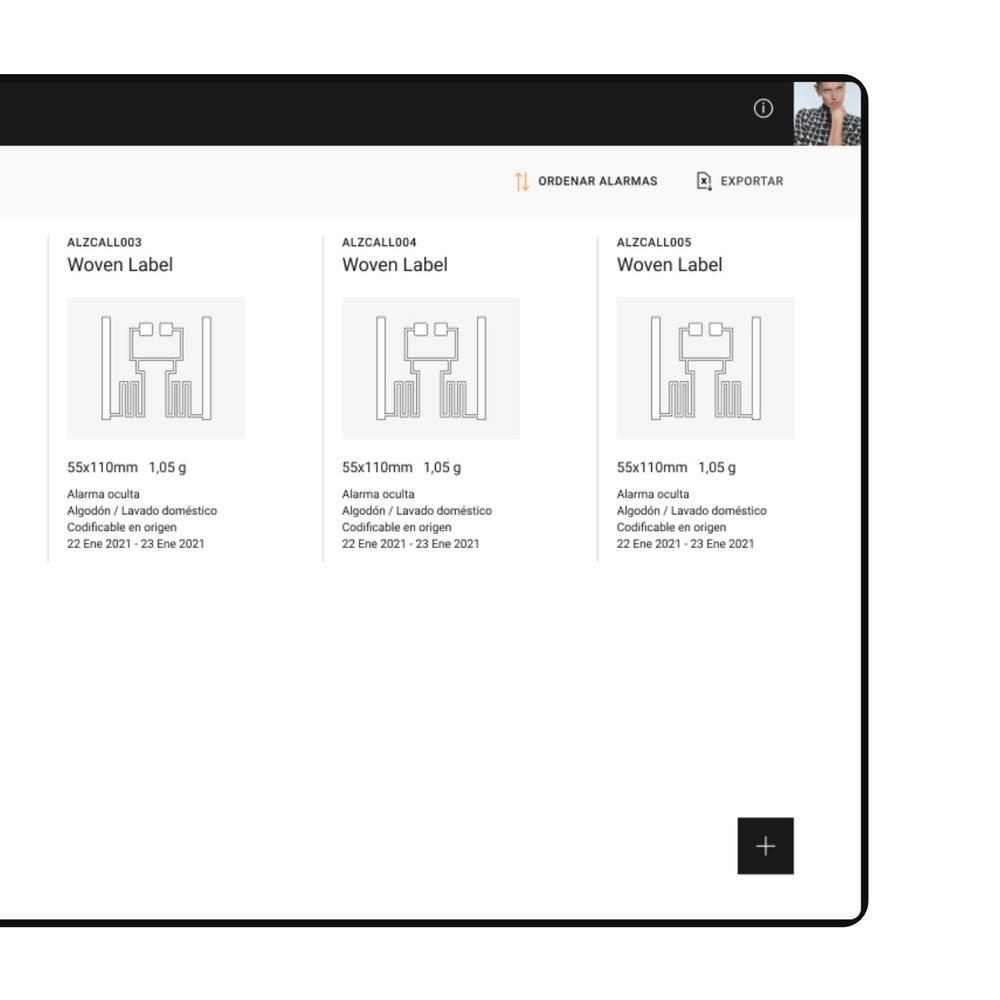
Master of labels, alarms and packaging
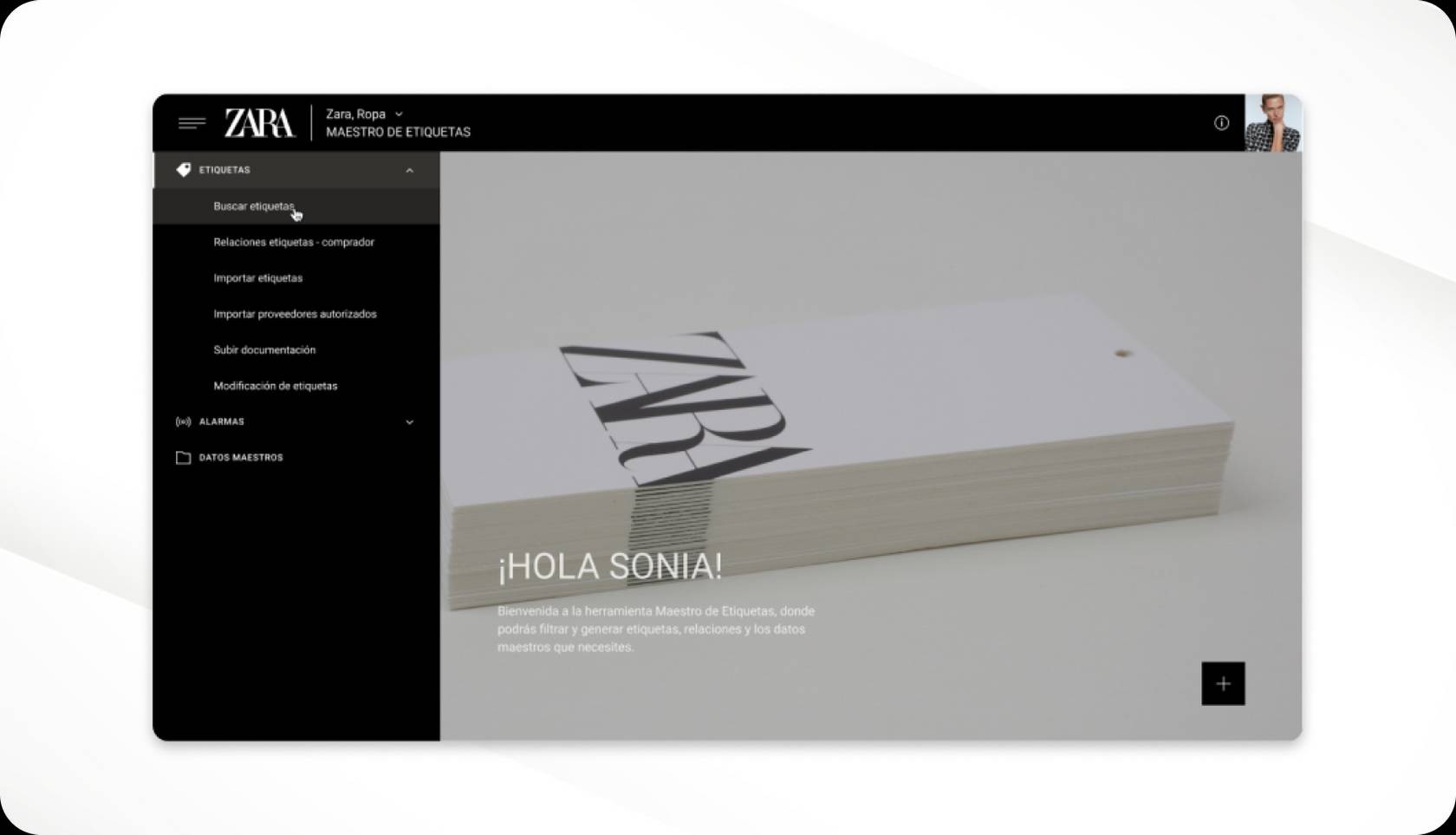

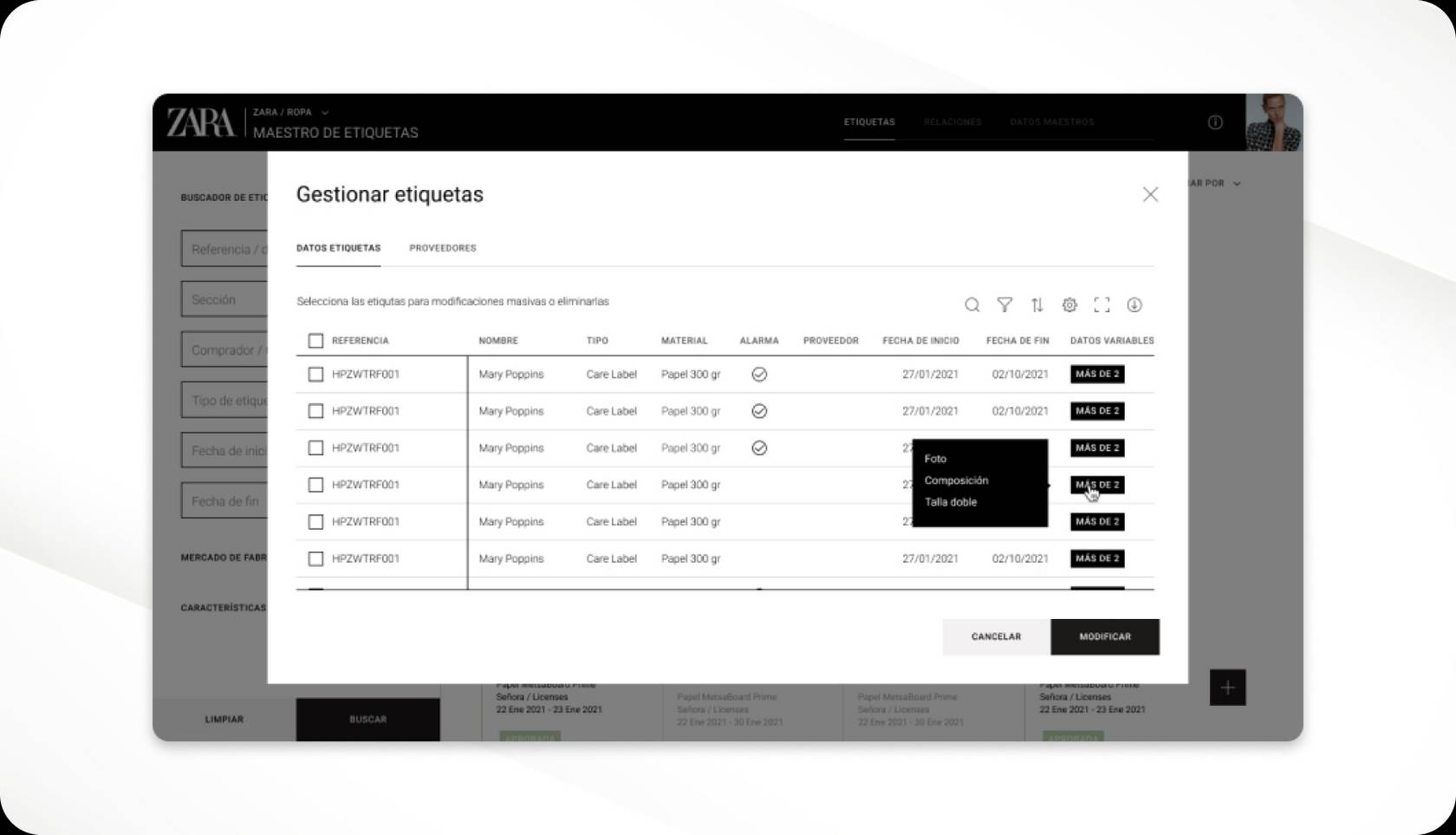



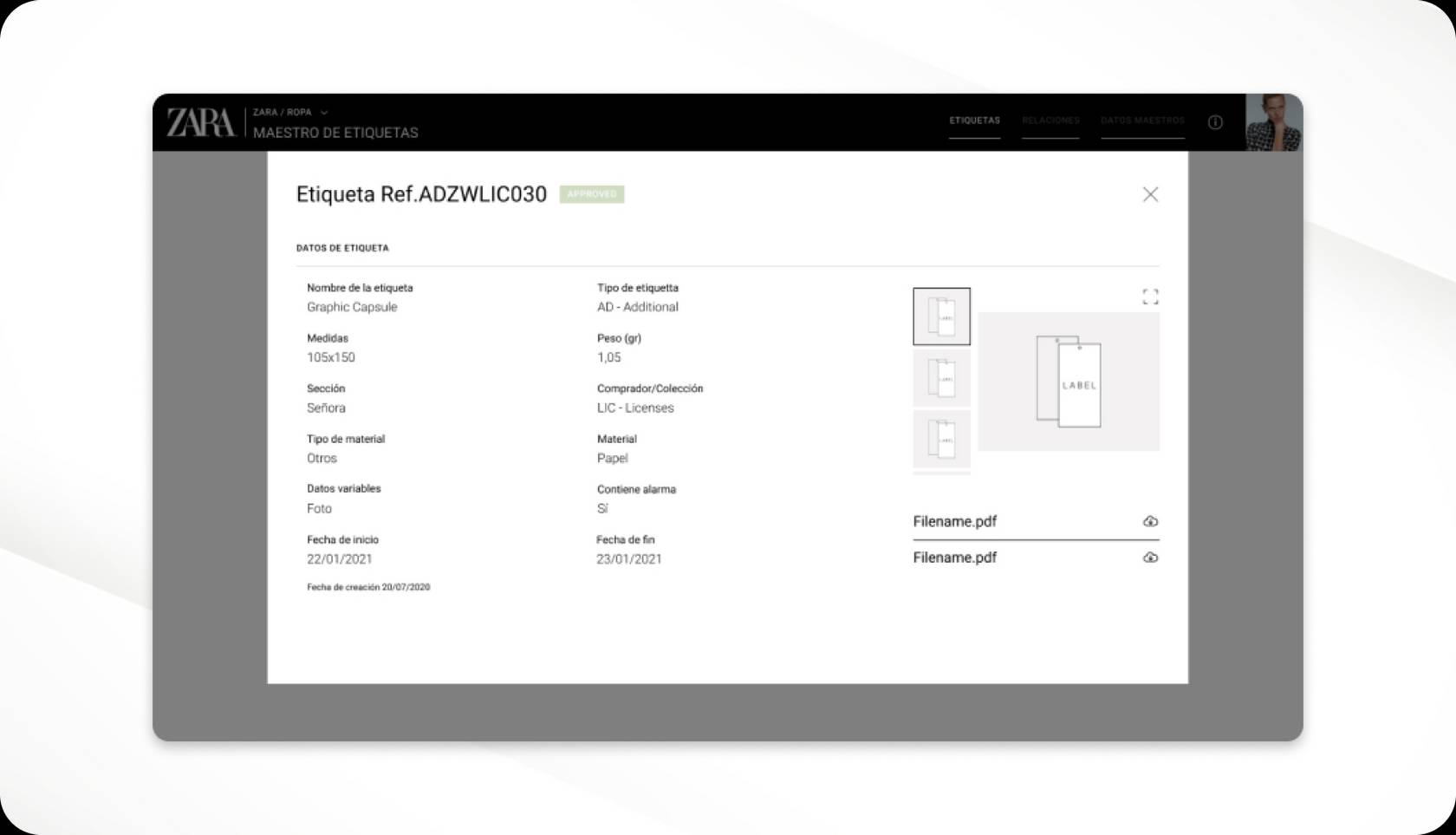

Calendar CD2
Logistics tool to calculate the goods that have to be shipped daily from warehouses to shops with low stock during the sales period. The tool estimates shipping and sales targets to calculate how many items are shipped daily.
CD2 is a functionality of the Calendars tool that had to be migrated in record time to the new web support.
Over a period of two weeks, research was carried out to understand how users worked with the tool and, at the same time, sessions were held with users to conceptualise the product and design the visual look and feel.
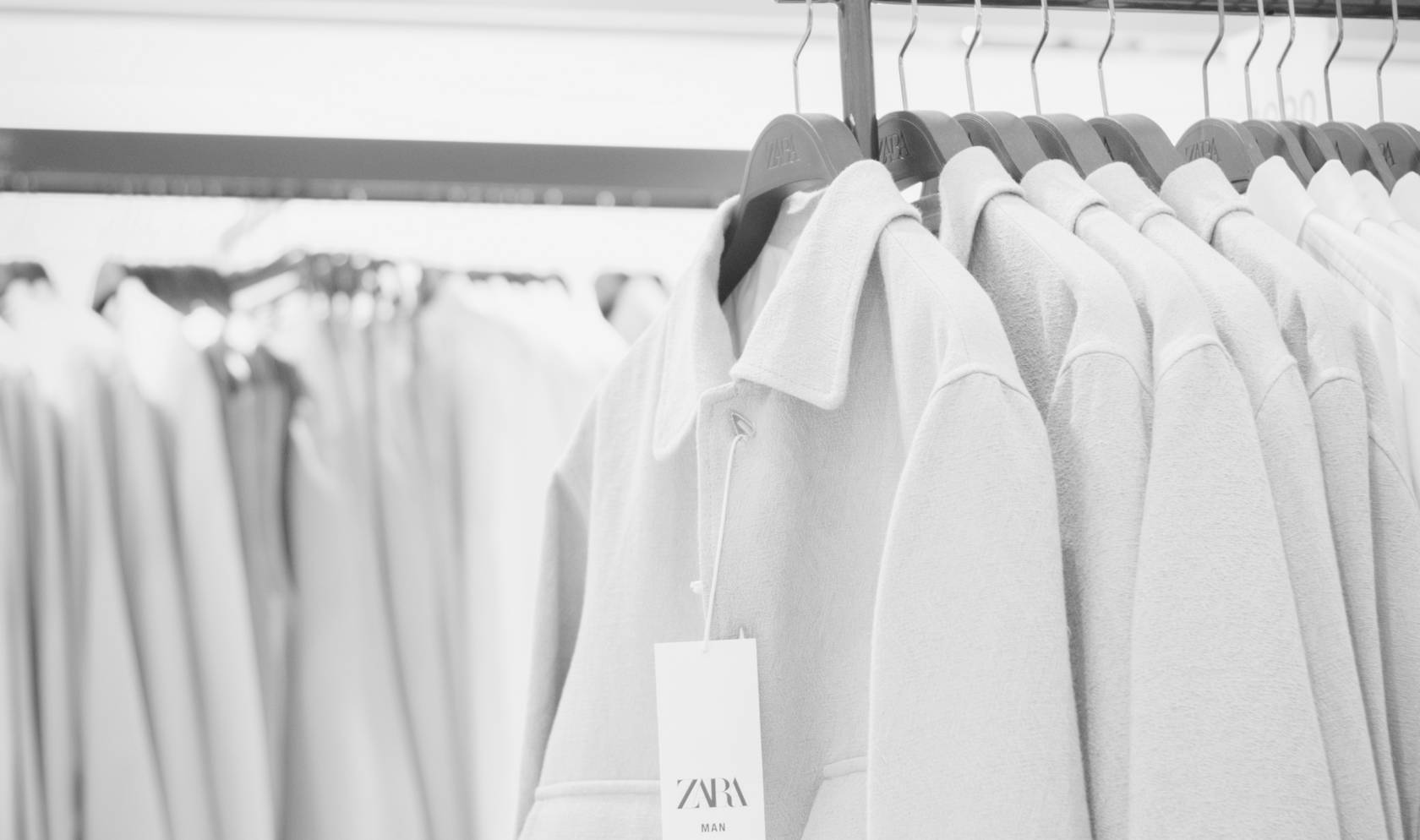

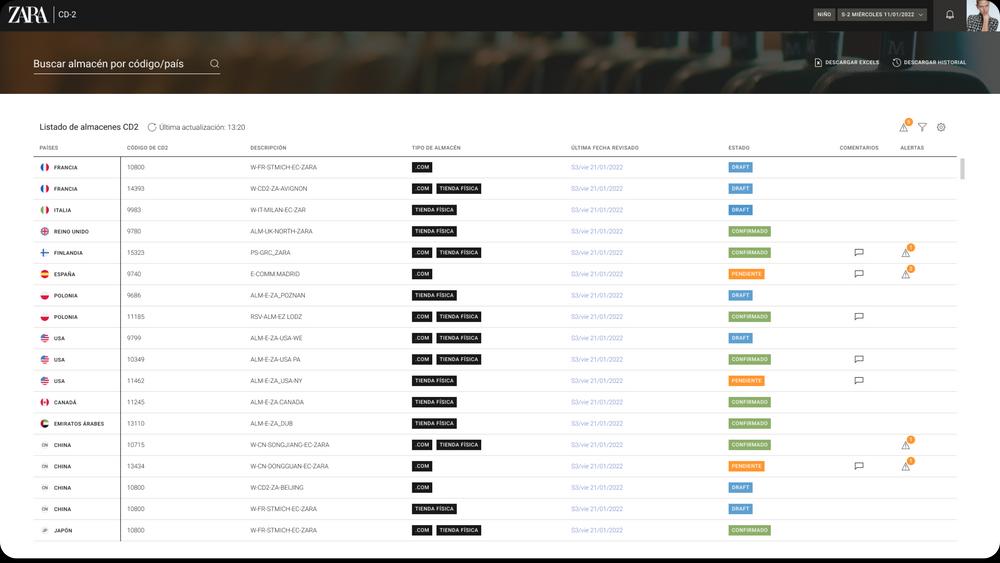
Merchan Manager
Merchan Manager is a communication and content management tool between a "manager" profile and a "shop manager" profile with the aim of managing in-store displays and showcases.
It allows the different teams to communicate how to manage the different products in the shop and how to show them to the end customer through images, videos, manuals, etc..., which are managed from the head office, for the creation of the different environments at the physical point of sale.
In this application our mission was to improve the user experience and devise new functionalities that would allow better collaboration between the different users.
